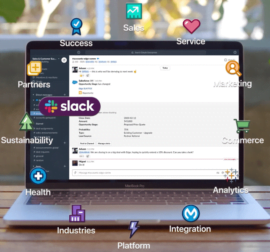 Contact us
Contact us Pardot in 2022
Pardot is a well know B2B marketing automation tool that was acquired by Salesforce in 2013. Since then, even though they were under one roof, they were in a sense different eco-systems. This situation changed in 2018 when Salesforce launched the Pardot Lightning App which enabled Pardot in the core platform. This enablement brought closer the marketing and sales teams using Salesforce and Pardot. This integration was the starting point of how we can see Pardot now in 2022.
Many more other changes came to life under Salesforce’s hand and I will show you the current main features and pain points for common users, which I have experienced.
Connector v2
Let’s start with the connection between Salesforce and Pardot. There are two versions, Salesforce-Pardot Connector v1 and v2. Connector v2 is a default option for the Pardot accounts purchased after 11.2.2019. Older accounts will still have the first version in their Org. There is a possibility to upgrade (not reversible).
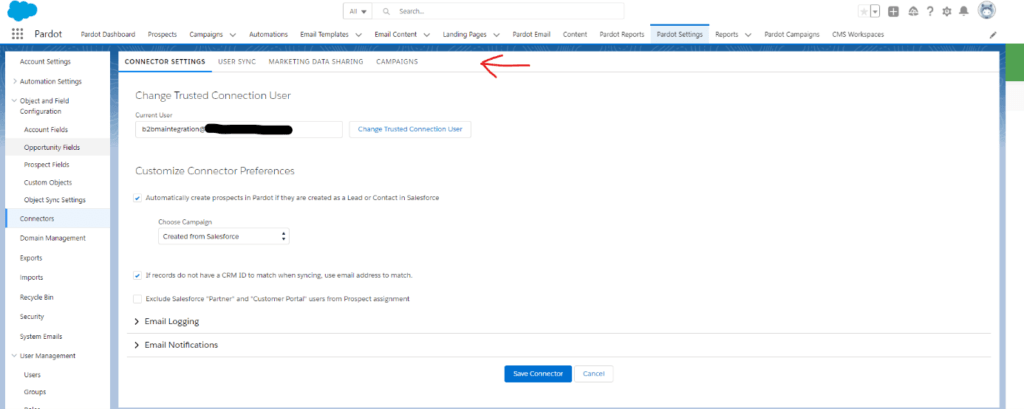
There are many benefits to the v2 Connector. To name a few – with every new business unit a new connector is created; you do not need an extra license (by using integration user); you can choose to pause syncing, and you can refresh metadata on-demand. Probably the biggest benefit is the easier Setup.

When it is good then some bad can occur. I want to share some difficulties which I have experienced with the Connector v2. There are reported cases where the Connector is stuck at „Verification in Progress“. In my example, I was able to find Salesforce Help provisioned solution. The problem was that the b2bmaintegration package did not install, even though I have closely followed the implementation guide (to be sure not to commit any steps). This situation was resolved by („re“) installing the package from the link provided in the Salesforce Help article.
Content Management System (CMS)
Another newer feature is the ability to set up CMS for Pardot Content, to be more specific it is more image storage. The setup is straightforward and CMS is easy to use.
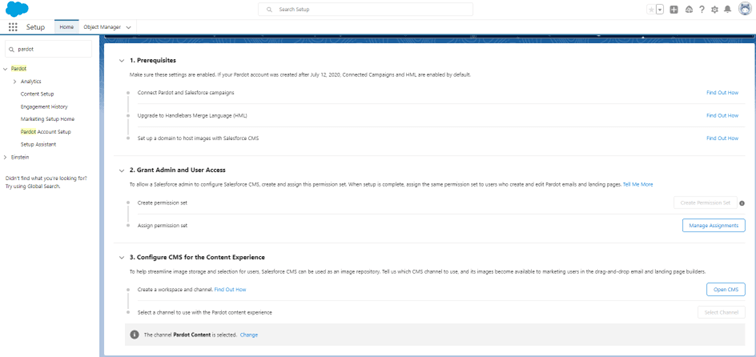
You can manage who can access and take care of the Workspace, set up a folder hierarchy, or just upload images. Stored images are accessible and ready to be used from your Lightning Email Builders or Landing Pages (more in the below section).

The CMS is available in limited versions for every Org by default.
Campaigns
Current standard is using Connected Campaigns which brings the user more into the Salesforce platform. When the Connected Campaigns are set up, Pardot users create new Campaigns from the same object tab as in Sales Cloud (for example). Usually, the setup consists of Campaigns being managed only from the Salesforce side.
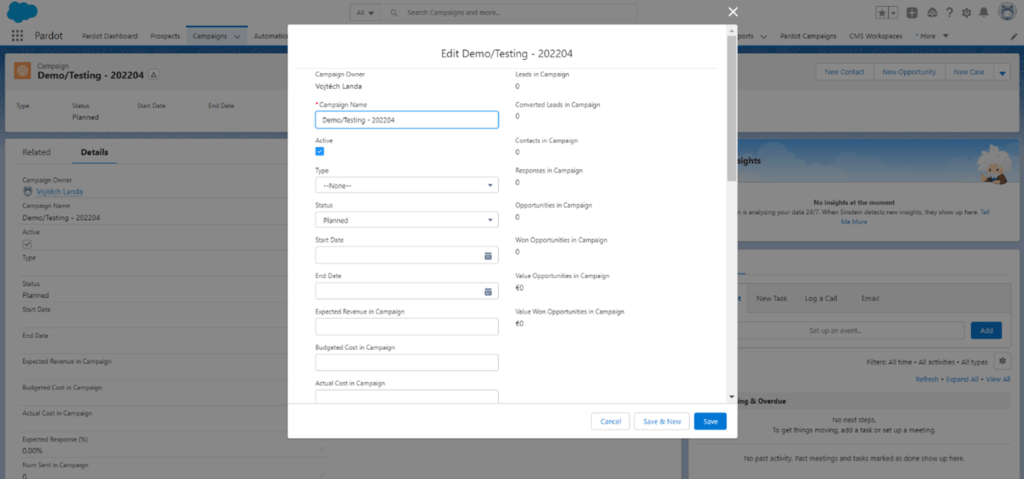
Connected Campaigns are helpful in reporting, removing duplication, and ability to track all touches on the prospect journey.
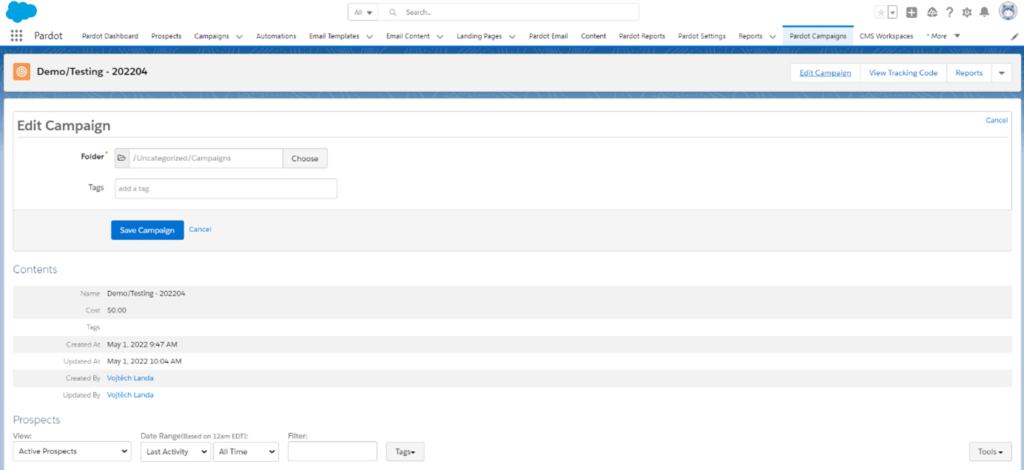
Pardot Campaigns remain but are read-only (you can edit folder and tag) and are automatically created and connected to the Salesforce Campaign records (1:1 relationship). There still can be found useful information about the Pardot side of Campaign data.
Prospects
Prospects in Pardot are without major changes. They can be found under the Prospect object tab. You can use Pardot premade filter options as before. What may be new to some of you is the cloud symbol next to a Prospect record. This symbol is an indicator that there is a Salesforce record (Lead or Contact) that is matched to the Prospect.
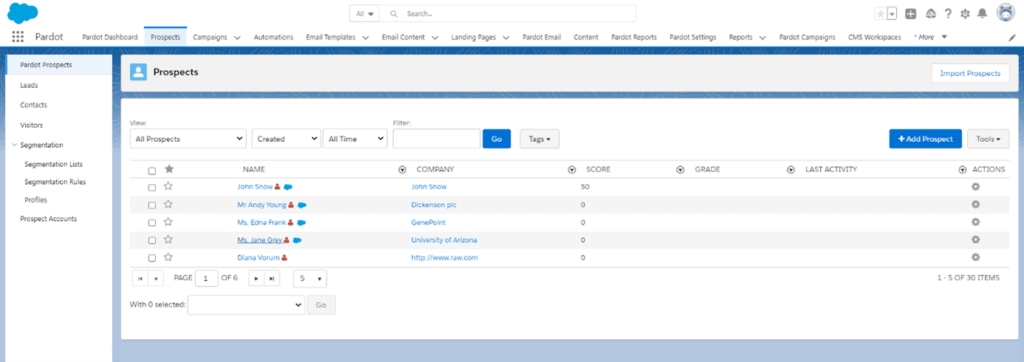
You are able to add/remove or define rules to fill lists as before.
Emails
There is a big change in the possibility of creating Email Content. Since the Winter 21 release, users are able to use the new Lightning Email Builder, which is similar to Page Builder. Instead of writing HTML, you can use drag-and-drop components which are easily editable/stylable. These components include Buttons, HTML, Images, and Rich Text. Also, you can use predefined layouts for rows (sections of the email).
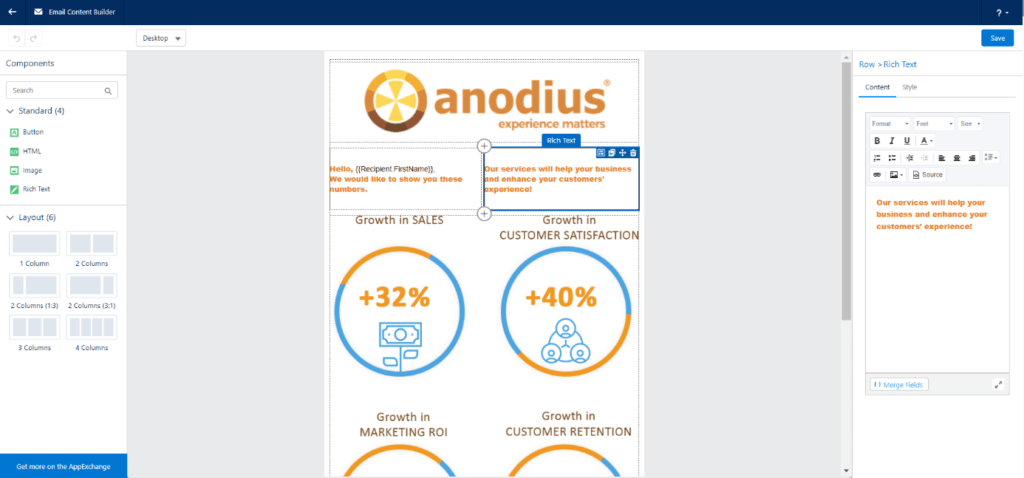
In the right panel, you can find editable bits. When you insert an image component, there is an option to add the image from CMS storage.
The Merge Fields are also included (using HML), so personalization is in place. What we can all appreciate is the ability to view the email in different preview sizes (desktop, mobile, tablet) and the Builder ensures it is responsive. There is even an Undo option. One of the greater advantages is Resending capability – no more cloning after each send.
The builder is available for Email Content (previously draft emails) and Email Templates. The feel of Email Template and Email Content object tabs (and its records) is true Salesforce.
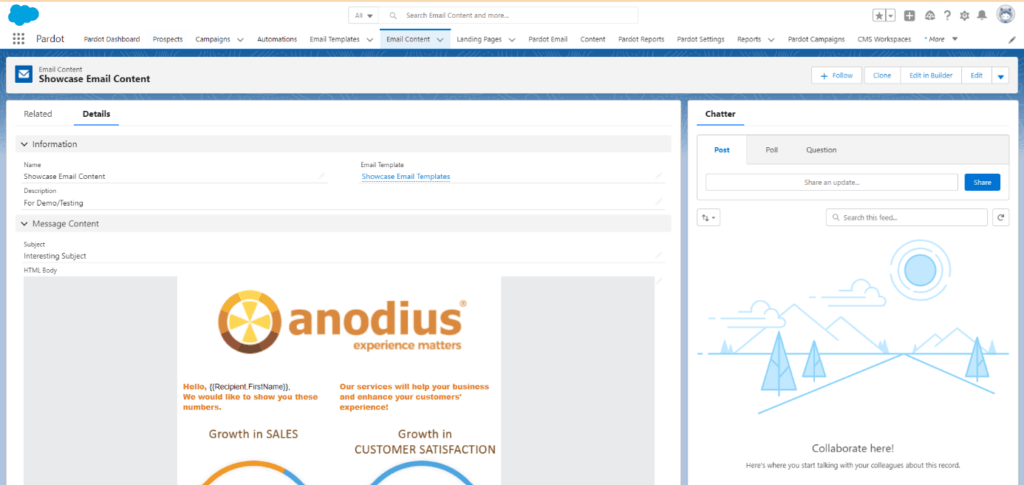
Unfortunately with many benefits of the new Builder, there is a significant number of compromises/missing features. Dynamic Content and Snippets are not currently supported. Merge fields are hit or miss – there is an incomplete list from which you are able to choose (although you can insert some manually written HTML tags). Unsubscribe/Preference Center is working only in the Rich Text component, when put into the Button you will encounter errors or you won‘t be able to send the email. Sending only text email is impossible – you are required to edit the Builder (HTML) part first and then add a text version to it (one does not work without the other). There are probably some other limitations that I am yet to discover.
On a positive note, the „old“ version of email building is still intact, so if you find yourself in a corner, you can help yourself by using the „original“ editors. Even though the Lightning Builders are a big step up, it may take some time to truly replace the older editors.
Landing Pages
Very similar story happened to Landing Pages in Winter 22 release. Basically, all the benefits and ease of use as previously mentioned in the Lightning Email builders are available in the Landing Page builder.
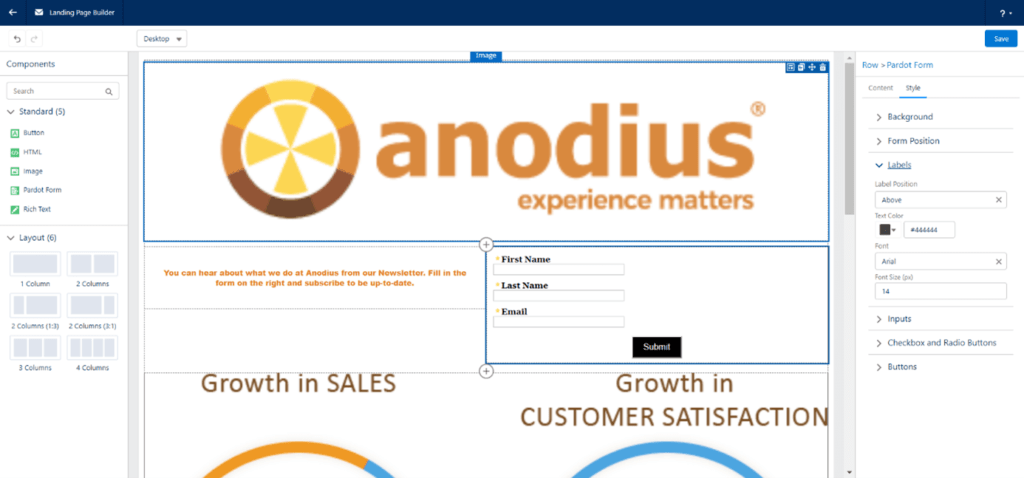
Apart from the builder, you get the Salesforce record (/list view) standard. Also, the Landing Page object is related to the Campaign, so there is the possibility of creating/editing shortcuts from within a Campaign. Another helpful change is the introduction of the Status field – with values of Draft; Published; Published, and changes pending.
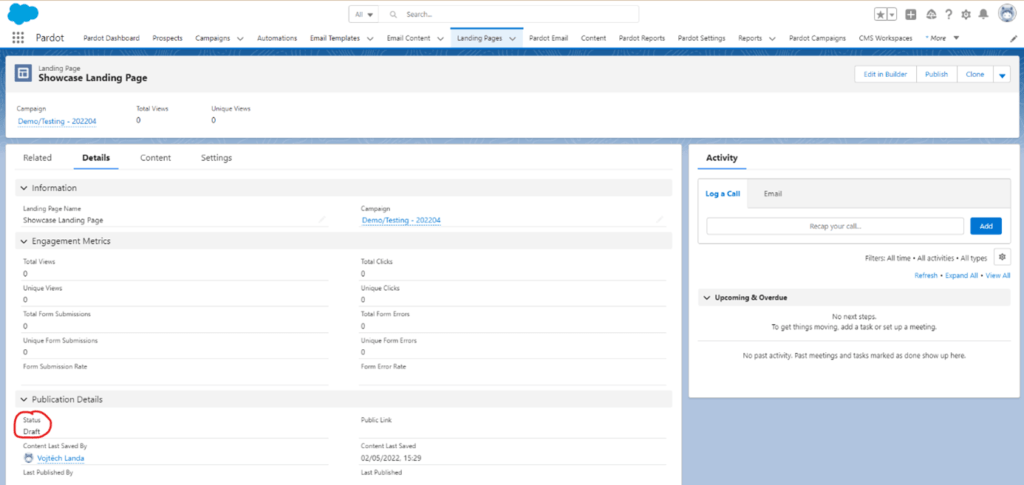
While staying positive, the biggest letdown for me is the limited option of editing from visuals. For some styling, you need to apply a workaround. Merge Field options are also incomplete (same as in Email builders). No Dynamic Content nor Snippets just yet.
Again, if you choose, Pardot still has the option to create Landing Pages old-school time.
Forms
I already mentioned Forms within the Landing Page builder, what about their creation?
Forms are still the „originals“. When you want a nice-looking Form you need to grab a coder (if you are not one) or use some helpful site.
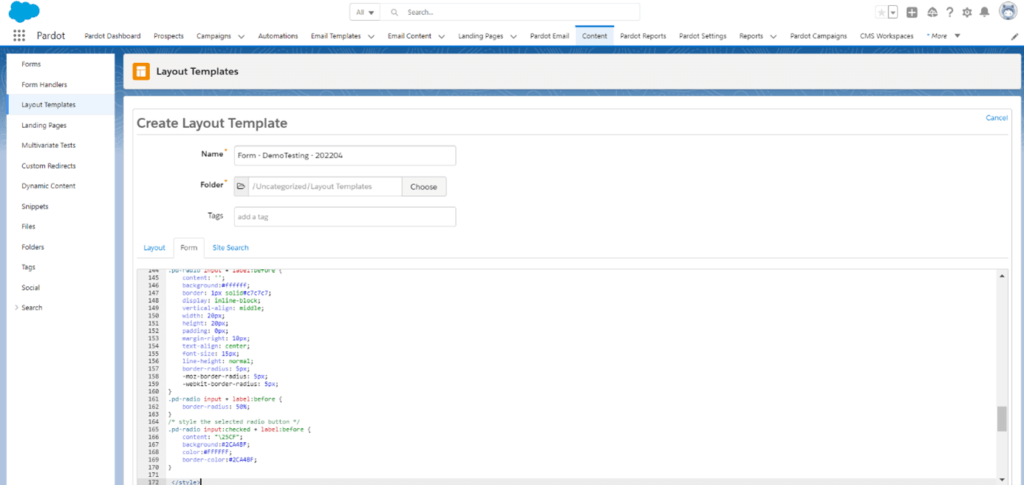
You probably know that in order to create a somewhat stylish form it is best to create a layout template with modified code and then choose the layout when creating the form itself. That (apart from the HTML) is quite easy. But what about Form in the new Landing Page builder? Well, the style you write in the layout does not affect the Landing Page…
But there is a way! You need to edit the Form and in the „Look and Feel“ section focus on the „Above Form“ tab. Then switch the editor to HTML format and input your styling.
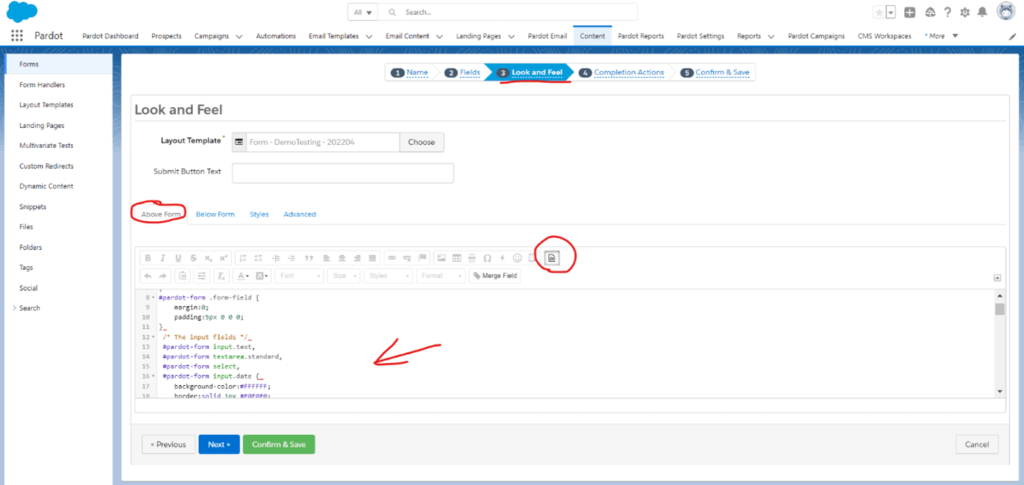
Now you will have – some – form styling within the Lightning Landing Page builder.
Conclusion
There is no denying that Salesforce is trying to get Pardot up-to-date. With these updates, Pardot is becoming a true Salesforce product while using its original strengths. Pardot on its own was a strong tool and we can see its evolution in „real-time“. The all-new Lightning builders are easier to use and I find them more adoption-friendly for new Pardot users.
I very much like the direction Salesforce is taking with Pardot and hope that on this metaphorical road many of the holes will get fixed soon.
Vojtech Landa, CRM Consultant
